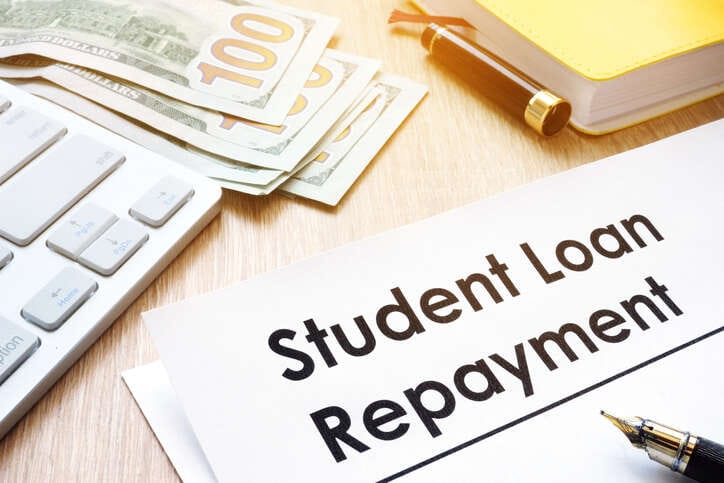
Debt Management for Graduate Students: Navigating Loans and Repayment Options
Managing debt is a crucial aspect of the financial journey for graduate students, especially when it comes to navigating loans and repayment options. As the pursuit of advanced education often entails significant financial commitments, it becomes essential for students to develop a solid understanding of student loans and devise effective strategies for repayment. This guide aims to provide graduate students with a comprehensive overview of debt management, offering insights into different types of loans, the loan application process, budgeting and financial planning, repayment options, and additional resources for support. By empowering students with the knowledge and tools necessary to navigate their loans and repayment journey, this guide aims to alleviate financial stress and pave the way for a successful and financially secure post-graduate life.

I. Understanding Student Loans
-
Types of student loans available for graduate students
- Federal loans: Federal loans are loans offered by the government to help finance education. They generally have more favorable terms and benefits compared to private loans. Some common federal loan programs for graduate students include Direct Unsubsidized Loans and Grad PLUS Loans.
- Private loans: Private loans are loans offered by banks, credit unions, and other financial institutions. They are not backed by the government and often have higher interest rates and fewer repayment options compared to federal loans. Private loans can be an option for graduate students who have exhausted federal loan options or need additional funding.
II. Key terms and concepts related to student loans
- Interest rates: Interest rates are the percentage of the loan amount that is charged as interest over a specified period. They can be fixed (remain the same throughout the loan term) or variable (fluctuate based on market conditions). Understanding the interest rates is important as it determines the overall cost of borrowing.
- Loan limits: Loan limits refer to the maximum amount that can be borrowed through a specific loan program. These limits vary depending on the type of loan and can impact the total amount of funding available to graduate students.
- Grace periods: Grace periods are the time periods after graduation, leaving school, or dropping below half-time enrollment when borrowers are not required to make loan payments. Grace periods vary depending on the loan program and offer borrowers some time to prepare for loan repayment.
- Subsidized vs. unsubsidized loans: Subsidized loans are federal loans where the government pays the interest while the borrower is in school, during grace periods, and deferment periods. Unsubsidized loans, on the other hand, accrue interest from the time the loan is disbursed. Understanding the difference between these loan types is crucial for managing interest accumulation during different periods of enrollment.
By familiarizing themselves with these key terms and concepts, graduate students can make informed decisions about their loan options and better understand the implications of borrowing and repayment.

Navigating the Loan Application Process
I. Researching and comparing loan options
- Exploring federal loan programs: Graduate students should research and understand the various federal loan programs available to them. This includes Direct Unsubsidized Loans, Grad PLUS Loans, and potentially other specialized loan programs. Comparing the terms, interest rates, and repayment options of these federal loan programs can help students make informed decisions.
- Evaluating private loan lenders: In cases where federal loans may not cover the full cost of education or alternative funding is needed, graduate students may consider private loan options. It is important to carefully evaluate private loan lenders, comparing interest rates, repayment terms, fees, and borrower benefits. Researching and comparing multiple lenders can help students find the most favorable private loan options.
II. Understanding the application requirements and deadlines
- Filling out the Free Application for Federal Student Aid (FAFSA): The FAFSA is a crucial step in applying for federal student loans. Graduate students should understand the FAFSA application process, gather the necessary financial information, and submit the form before the specified deadline. The FAFSA determines eligibility for federal loans and other forms of financial aid.
- Submitting additional documentation for private loans: When applying for private loans, lenders may require additional documentation such as income verification, credit history, and enrollment verification. Graduate students should be aware of these requirements and gather the necessary documents promptly to meet the lender’s deadlines.
Understanding the loan application requirements and deadlines is vital to ensure a smooth application process and secure the necessary funding for graduate education. By conducting thorough research, comparing loan options, and staying organized with the application process, graduate students can increase their chances of securing favorable loan terms.

Budgeting and Financial Planning
I. Assessing your current financial situation
- Calculating income and expenses: Graduate students should assess their current financial situation by calculating their income from sources such as part-time jobs, fellowships, or grants. They should also identify and track their expenses, including tuition, fees, rent, utilities, transportation, groceries, and other essential costs. This analysis helps gain a clear understanding of their financial inflows and outflows.
- Identifying areas for potential savings: By closely examining their expenses, graduate students can identify areas where they can potentially reduce costs. This may involve evaluating discretionary spending, finding ways to save on utilities or transportation, and exploring cost-saving measures such as sharing housing or opting for used textbooks.

Creating a realistic budget
- Allocating funds for tuition, fees, and living expenses: A crucial aspect of budgeting is allocating funds for tuition, fees, and essential living expenses. Graduate students should prioritize these expenses and ensure that their budget allows for the necessary funds to cover them. This includes considering any anticipated changes in tuition costs or living arrangements.
- Accounting for loan repayment in the budget: It is essential to account for loan repayment in the budget to avoid financial strain and ensure timely payments. Graduate students should factor in their loan repayment obligations, including the monthly payment amounts, interest rates, and repayment term. By incorporating loan repayment into their budget, they can proactively manage their finances and plan for debt reduction.
Creating a realistic budget based on a thorough assessment of income, expenses, and financial goals is a crucial step for graduate students. It enables them to make informed financial decisions, effectively manage their resources, and maintain a healthy financial outlook while accounting for loan repayment obligations.

Repayment Options for Graduate Students
I. Federal loan repayment plans
- Standard repayment: Under the standard repayment plan, graduate students make fixed monthly payments over a predetermined period (usually 10 years). This plan typically results in higher monthly payments but allows borrowers to pay off their loans more quickly, ultimately saving on interest.
- Graduated repayment: Graduated repayment plans start with lower monthly payments that gradually increase over time (usually every two years). This option is beneficial for graduate students who anticipate their income to increase steadily over the repayment period.
- Income-driven repayment plans: Income-driven repayment plans, such as Income-Based Repayment (IBR), Pay As You Earn (PAYE), Revised Pay As You Earn (REPAYE), and Income-Contingent Repayment (ICR), offer more flexible repayment options based on the borrower’s income and family size. These plans adjust the monthly payments to be a percentage of the borrower’s discretionary income, providing more manageable payments for those with lower incomes.
II. Loan forgiveness and cancellation programs
- Public Service Loan Forgiveness (PSLF): The PSLF program offers loan forgiveness to borrowers who work full-time for qualifying public service organizations, such as government or non-profit organizations, while making 120 qualifying payments. After meeting the requirements, the remaining loan balance is forgiven.
- Teacher Loan Forgiveness: The Teacher Loan Forgiveness program provides loan forgiveness for eligible teachers who work in low-income schools or educational service agencies for five consecutive years. The program forgives a portion of the loan balance, up to a specified amount, depending on the subject taught and the level of certification.
- Loan repayment assistance programs (LRAPs): LRAPs are programs offered by some employers, states, or educational institutions to provide financial assistance toward loan repayment. These programs often target specific professions or industries with the aim of attracting and retaining talented individuals.
Understanding the available federal loan repayment plans and loan forgiveness programs is crucial for graduate students in managing their debt effectively. By exploring and selecting the repayment option that best aligns with their financial situation and long-term goals, students can navigate their loan repayment journey more successfully. Additionally, being aware of loan forgiveness and cancellation programs can provide potential opportunities for reducing or eliminating their loan debt burden.
In conclusion, effective debt management is paramount for graduate students as they navigate loans and repayment options. By understanding the types of student loans available, such as federal loans and private loans, and grasping key loan terms like interest rates, loan limits, grace periods, and subsidized vs. unsubsidized loans, students can make informed decisions. Navigating the loan application process requires researching and comparing loan options while being mindful of application requirements and deadlines. Additionally, budgeting and financial planning play a vital role, involving assessing current financial situations, creating realistic budgets that account for tuition, living expenses, and loan repayment, and identifying areas for potential savings. Knowing the available repayment options, including federal loan repayment plans and loan forgiveness programs like PSLF, Teacher Loan Forgiveness, and LRAPs, empowers graduate students to manage their debt effectively. By adopting proactive debt management strategies, graduate students can set themselves on a path towards financial stability and success in their post-graduate lives.


